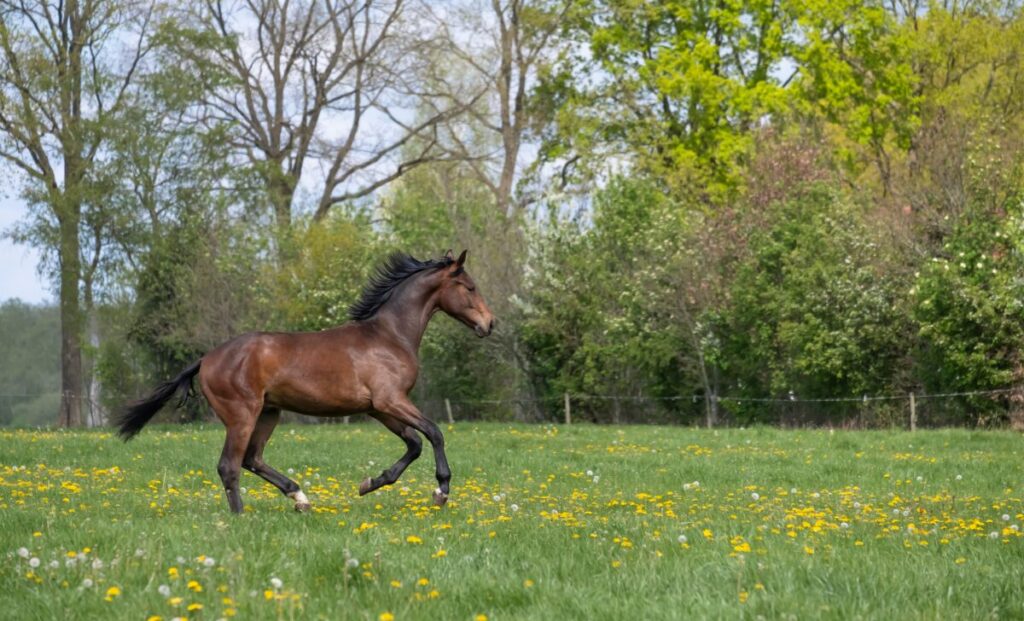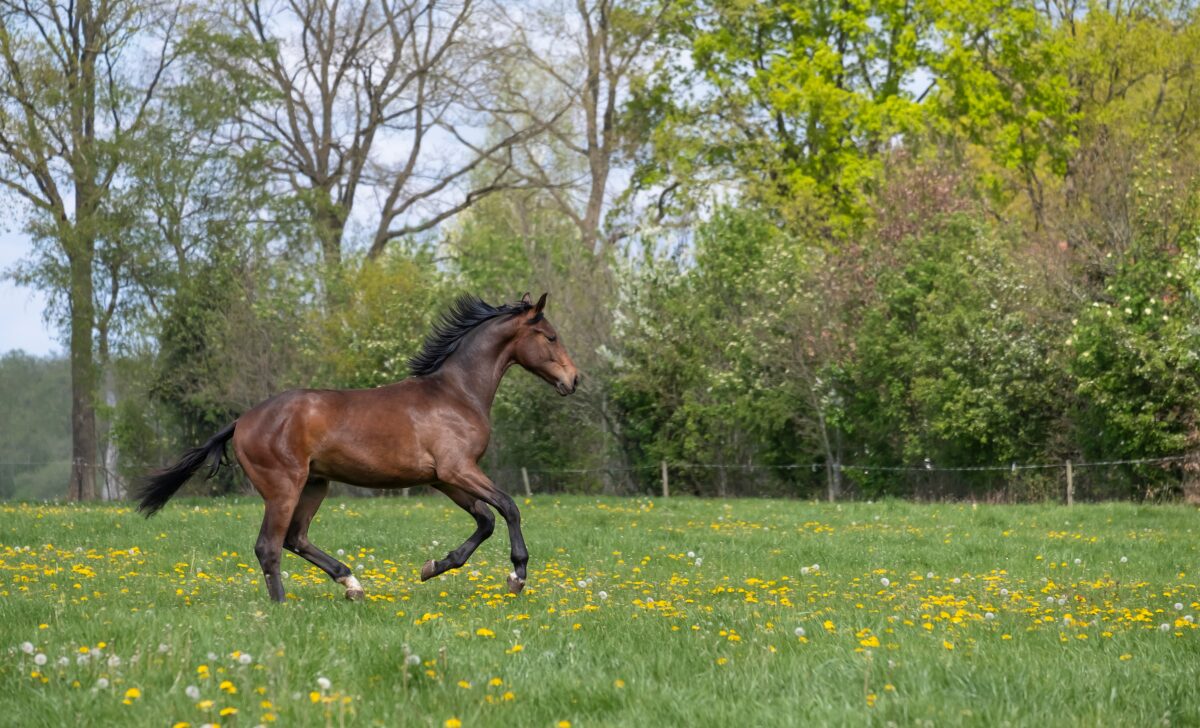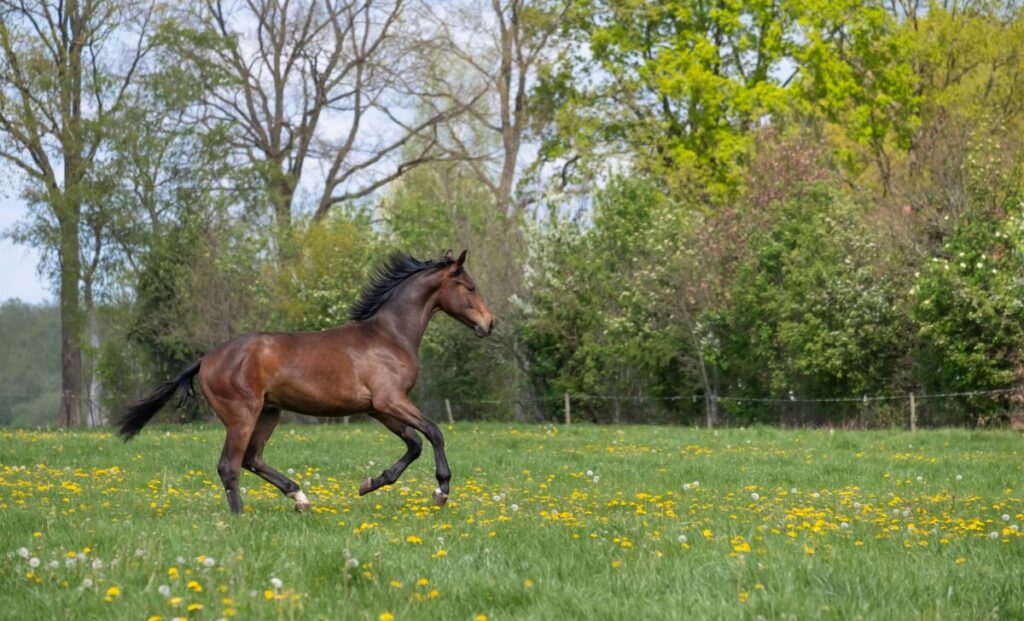Dressage, an equestrian sport that is often compared to ballet, demands precision, control, and harmony between horse and rider. The breed of your horse can significantly influence your success in dressage. This post will guide you through understanding dressage, factors to consider when choosing a breed, and profiles of top horse breeds ideal for dressage.
Understanding Dressage
Dressage, an elegant and highly disciplined equestrian sport, is a test of the partnership between horse and rider. The term “dressage” itself originates from the French word meaning “training”, underlying the sport’s core focus on harmonious and systematic training of the horse.
At its heart, dressage is both a competitive sport and a form of art. It is often compared to ballet due to its emphasis on balance, rhythm, and grace. However, unlike ballet, dressage involves two independent beings working together as one. This highlights the unique challenge and beauty of the sport.
In a typical dressage competition, horse and rider perform a series of prescribed movements known as “tests” in a specific order. These tests range from simple tasks suitable for beginners, like walking in a straight line, to advanced movements such as pirouettes and piaffes, which require years of training to master. Each movement is designed to showcase the horse’s obedience, flexibility, balance, and power, as well as the rider’s skill and finesse in communication.
The ideal dressage horse embodies several key characteristics. Agility is paramount; the horse must be able to change direction and adjust its stride with ease. Responsiveness is equally important. In dressage, subtle cues from the rider guide every movement. Thus, the horse must be keenly attuned to the rider’s instructions and willing to respond promptly. A dressage horse should also exhibit a natural grace and strength, moving with fluidity and power throughout each test.
However, beyond these physical attributes, the mental temperament of a dressage horse is crucial. A good dressage horse is calm, patient, and possesses a willingness to learn. It’s this combination of physical ability and mental temperament that makes a horse suitable for the rigors of dressage.

Considerations When Choosing a Horse Breed for Dressage
A. Temperament
One of the most critical factors to consider when choosing a horse for dressage is temperament. Dressage requires a high level of cooperation between horse and rider. The horse must be calm enough to handle the pressures of training and competition, but also eager and willing to learn. A horse that is too anxious or stubborn may find it difficult to focus on the tasks at hand, making progress in training challenging.
Assessing a horse’s temperament can be done by spending time with the horse, observing its behavior in various situations, and talking to those who are familiar with the horse. A horse with a good temperament for dressage should respond well to human interaction, show curiosity without excessive fear, and exhibit patience during training sessions.
B. Size
Size plays a significant role in dressage. A horse needs to be large enough to carry a rider comfortably, but not so large that it loses agility and responsiveness. The horse’s size can also affect its ability to perform certain movements. For example, smaller horses may excel at quick, intricate movements, while larger horses may excel at extended gaits and powerful jumps.
When choosing a horse, consider your own size and riding ability. If you are a tall rider, you may feel more comfortable on a larger horse, whereas if you are smaller or less experienced, a smaller horse may be more manageable. However, remember that size should not be the only deciding factor; temperament and skill are equally important.
C. Health
Health is a paramount consideration when choosing a horse for dressage. A healthy horse will be able to withstand the physical demands of dressage training and competition. Chronic health issues can limit a horse’s performance and lead to discomfort or distress for the horse.
Before purchasing a horse, arrange for a pre-purchase exam with an equine veterinarian to assess the horse’s overall health and identify any potential issues. This exam typically includes a thorough physical examination, lameness evaluation, and may also include diagnostic imaging or blood tests.
D. Lifespan
Finally, consider the horse’s lifespan. Dressage is a sport that requires time and patience for both the rider and horse to master. Choosing a breed known for a long, healthy lifespan can provide many years of companionship and competition.
Different breeds have different typical lifespans, and this can be influenced by many factors including genetics, diet, exercise, and veterinary care. Researching breed-specific information and talking to breeders or other owners can provide valuable insight into what to expect.
Top Horse Breeds for Dressage
Here are some of the top breeds that excel in dressage:
Warmbloods (Dutch Warmblood, Hanoverian, Oldenburg)
Warmbloods, including Dutch Warmblood, Hanoverian, and Oldenburg breeds, are renowned for their size, strength, and calm demeanor, making them popular choices for the discipline of dressage. Originating primarily from Europe, these breeds have an illustrious history that is deeply intertwined with equestrian sports. They were meticulously bred over generations, blending the best traits of local and foreign breeds, to create horses with the power, agility, and temperament required for high-level performance in various equestrian pursuits, including dressage.
Physically, Warmbloods typically stand between 15.2 and 17.2 hands high, making them larger than most other horse breeds. Their bodies are muscular and well-proportioned, with strong, long legs and powerful hindquarters – ideal for the powerful and expressive movements required in dressage. However, despite their large size and strength, Warmbloods are known for their elegance and grace, with smooth, flowing gaits that are a pleasure to watch and ride.
In terms of temperament, Warmbloods are usually calm, patient, and intelligent, with a keen willingness to work and learn. This combination makes them highly trainable and adaptable to the demands and challenges of dressage. They are known for their ability to form strong bonds with their riders, responding well to gentle, consistent training methods. Their good-natured temperament, combined with their physical capabilities, contributes significantly to their success in dressage.
Dressage arenas worldwide have seen numerous Warmbloods excel, thanks to their unique blend of physical and mental attributes. For instance, Dutch Warmblood Totilas, ridden by Edward Gal, broke multiple world records in dressage, and Hanoverian mare Salinero, ridden by Anky van Grunsven, won several Olympic gold medals. Similarly, Oldenburg stallion Sandro Hit, ridden by Dr. Ulf Möller, won the World Championship for Young Dressage Horses. These are just a few examples of Warmbloods that have left an indelible mark on the dressage world, demonstrating the breed’s suitability and potential for this elegant equestrian sport.
Thoroughbreds
Thoroughbreds, a breed often associated with racing, can indeed excel in dressage due to their exceptional athleticism, speed, and agility. This breed’s natural attributes make them a viable choice for dressage, despite the common perception that they are only suited for the racetrack.
Historically, Thoroughbreds have significantly marked their presence in FEI level dressage during the first 50 years of official dressage competition. Their inherent speed and agility, combined with a trainable temperament, can translate well into the discipline of dressage when appropriately guided.
Moreover, Thoroughbreds are known for their great brains and quick learning abilities. They’re typically uncomplicated, not argumentative or stubborn, and once they understand what is expected of them, they are generally willing to comply. This mental acuity and eagerness to please can be a significant asset in dressage, where understanding and executing complex sequences of movements is key.
However, transitioning a Thoroughbred from racing to dressage isn’t always straightforward. Retraining a former racehorse for dressage requires patience and time, often at least a year, as the horse needs to be completely “restarted” to adapt to the different demands of dressage. But with the right training and approach, a Thoroughbred can indeed become a successful dressage mount, proving that Thoroughbreds’ capabilities extend beyond the racetrack.
Andalusians
Andalusians, hailing from the Iberian Peninsula in Spain, are highly regarded for their compact build, strength, and natural grace. These attributes render them excellent candidates for dressage. Their history is steeped in nobility and tradition, as they were initially bred for the Spanish royalty and cavalry. Over time, their innate agility and responsiveness have been honed, making them particularly well-suited to the finesse required in dressage.
Physically, Andalusians are typically medium-sized horses, with a strong yet elegant build that lends itself well to dressage. Their compact bodies combined with muscular strength allow them to execute complex movements with precision and ease. They possess a unique combination of power and grace, evident in their high-stepping, extended gaits, which are a hallmark feature of the breed.
When it comes to temperament, Andalusians are known for their intelligent, sensitive, and docile nature. They are quick learners who respond well to training, making them ideal partners in the discipline of dressage. Their willingness to work, coupled with their ability to form strong bonds with their riders, contributes significantly to their success in the sport.
Andalusians have left a significant mark on the world of dressage, demonstrating their capabilities and potential in this demanding equestrian discipline. Their exceptional athleticism and agility, combined with their cooperative temperament, make them an excellent choice for anyone seeking a dressage partner. Despite their royal lineage and distinguished history, Andalusians continue to prove that they are not just show horses but also capable and competitive athletes in the dressage arena.
Lusitanos
Originating from Portugal, Lusitanos are closely related to the Andalusian breed and share many of the same desirable traits that make them excellent for dressage. They are agile and athletic, with a build that is both sturdy and elegant, making them well-suited to the rigorous demands of dressage.
Lusitanos are often described as ‘baroque’ type horses, characterized by their muscular bodies, powerful hindquarters, and convex facial profiles. Their strong muscling, particularly in the hindquarters, allows for powerful, elevated movements, which are desirable in dressage.
One of the standout characteristics of Lusitanos is their intelligent and willing nature. These horses are known for their high levels of concentration and exceptional attitude towards work, making them highly trainable. These traits, coupled with their courage and sensitivity, make them particularly skilled for both classical and competition dressage.
Lusitanos are also renowned for their smooth yet elevated gaits, which are not only comfortable to ride but also visually captivating – a quality that adds to their appeal in the dressage arena. Their swift and graceful movements, combined with their reliable and strong-nerved temperament, have established them as true dressage talents.
Lipizzaners
Originating from the Lipica stud farm in modern-day Slovenia, Lipizzaners have a storied history in dressage, being most famous for their performances at the Spanish Riding School in Vienna. These horses are renowned for their intelligence, agility, and impressive movements, making them ideal dressage performers.
A unique characteristic of Lipizzaners is their late physical development. They mature slower than many other breeds but this also means they have longer working lives. Their compact, muscular build contributes to their agility and strength, both of which are crucial for executing complex dressage movements.
Lipizzaners are most recognized for their ability to perform the “airs above the ground,” which are a series of highly controlled, stylized jumps and poses that were originally developed as aggressive maneuvers in warfare. Such movements require not only physical strength and flexibility, but also a high degree of intelligence and concentration.
In terms of temperament, Lipizzaners are known for their docile, patient, and intelligent nature. They are easy to train and have a strong desire to please their riders, which makes them excellent partners in dressage. Their responsiveness and sensitivity to their rider’s aids are key to their success in this discipline.
Making the Right Choice: Tips and Guidelines
Choosing the perfect horse for dressage is indeed a significant decision that requires careful thought and consideration. While the breed of the horse can play a substantial role in determining its suitability for dressage, it’s crucial to remember that individual temperament, training, and compatibility with the rider are equally important. Here are some tips and guidelines to help you make the right choice.
I. Recognize the Individuality of Each Horse
In the world of horses, it’s crucial to understand that each horse is unique, possessing its own personality, temperament, and abilities. While certain breed characteristics can provide a general idea of what to expect, they do not define every individual of that breed. For instance, while Thoroughbreds are generally known for their speed and agility, not every Thoroughbred will fit this mold perfectly. Some might be more laid-back or possess a different skill set.
When choosing a horse for dressage, it’s essential to evaluate each horse as an individual. Spend time observing their behavior in various situations — how do they react to new environments? How do they interact with other horses and humans? Do they show signs of quick learning during training sessions? These observations can offer invaluable insights into whether a particular horse will suit your needs and expectations for dressage.
II. Evaluate Your Personal Preferences and Circumstances
Selecting the right horse for dressage also requires a clear understanding of your personal preferences and capabilities as a rider. It’s important to be honest with yourself about your riding level, skills, and ambitions. For example, if you’re a beginner, a calm and experienced horse might be a better choice than a young, high-energy one. If you’re a more advanced rider, you might prefer a horse with the potential for higher-level competition.
In addition to your riding skills, consider your lifestyle and circumstances. Factors such as the amount of time you can dedicate to training and caring for your horse, your budget for ongoing costs like feed, veterinary care, and tack, and even the space you have available for stabling should all play a part in your decision. Remember, owning a horse is a long-term commitment that involves not just riding, but also care and maintenance.
III. Spend Quality Time with Potential Horses
Before making a decision, it’s highly recommended to spend quality time with any potential horse. This is more than just a ride or two; it’s about building a connection and understanding the horse’s character and quirks. Spending time with the horse in different situations, such as during feeding, grooming, training, and even downtime, can give you a well-rounded view of the horse’s temperament and behavior.
During this time, take note of how the horse behaves. Is it calm and relaxed, or does it seem nervous and jittery? Does it respond well to commands, or does it resist? How does it react to new situations or challenges? These observations can provide important clues about whether the horse will be a good match for you and your dressage aspirations.
IV. Seek Professional Advice
When it comes to choosing the right horse for dressage, don’t underestimate the value of professional advice. Trainers, experienced riders, and equine veterinarians have a wealth of knowledge and experience to share. They can provide insights into a horse’s suitability for dressage, potential health issues, and even suggest specific breeds or individuals that might be a good fit for you.
Consulting with experts can help you avoid common pitfalls and make a more informed decision. For example, a trainer can assess a horse’s current training level and potential for advancement in dressage. A vet, on the other hand, can identify any health concerns that could affect the horse’s performance or well-being in the future. Their advice can be invaluable in helping you choose the right partner for your dressage journey.
V. Arrange for a Pre-Purchase Vet Check
One of the final and most important steps before purchasing a horse is arranging for a pre-purchase veterinary examination. This comprehensive check-up, performed by an equine veterinarian, aims to assess the horse’s overall health and fitness. The vet will examine the horse’s physical condition, gait, and may also perform blood tests or other diagnostic procedures to detect any underlying health issues.
During a pre-purchase vet check, the vet might look at the horse’s heart, lungs, eyes, teeth, legs, and hooves. They may also observe the horse while it’s moving and possibly under saddle. While a pre-purchase exam cannot guarantee future health, it can provide a snapshot of the horse’s current health status and identify any potential red flags. This information is crucial in making an informed decision about whether the horse is a suitable and healthy choice for dressage.
Conclusion
Choosing the right horse breed for dressage is a process that requires careful consideration and research. The perfect partner for you is one that matches your riding skills, complements your personality, and shares your passion for this beautiful sport. Take your time, enjoy the process, and look forward to the rewarding journey ahead.





